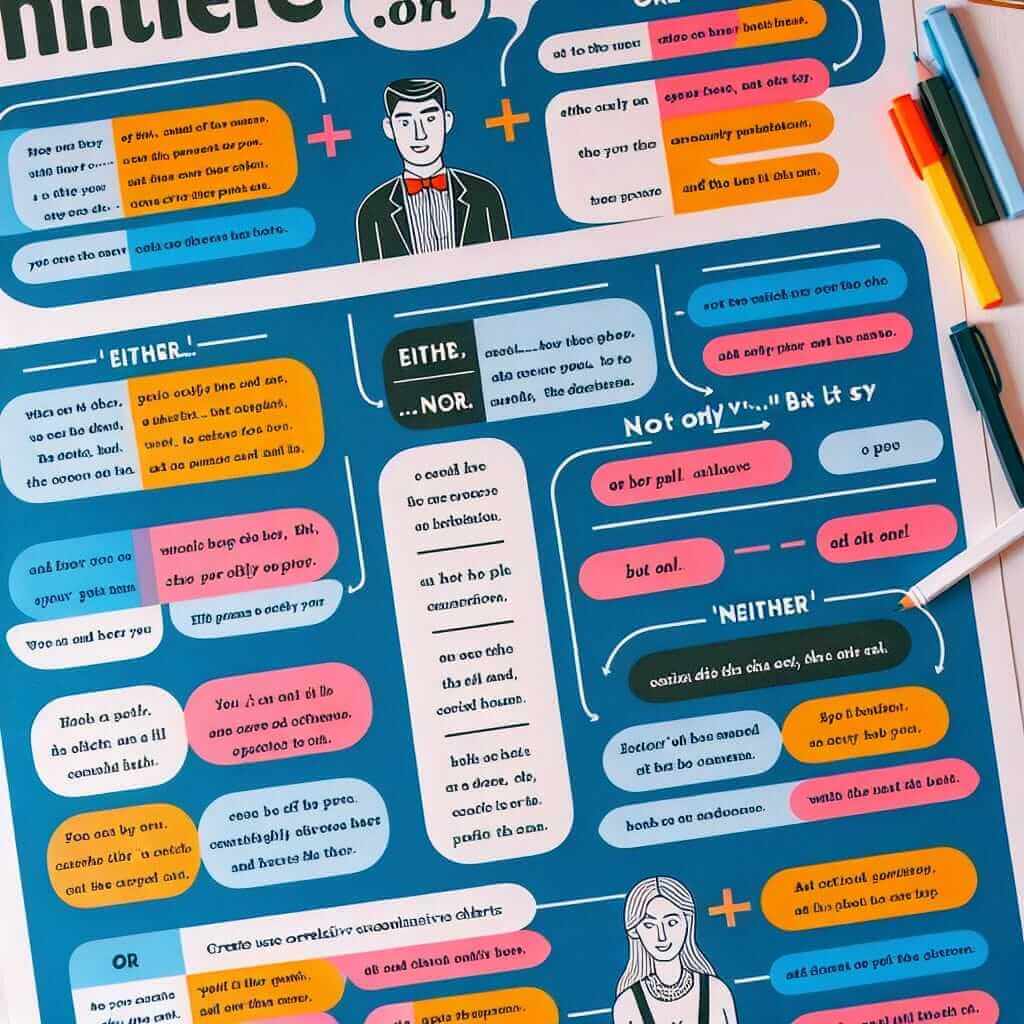Correlative conjunctions – those dynamic duos like “either…or,” “neither…nor,” and “not only…but also” – can add sophistication and clarity to your IELTS writing and speaking. Mastering their use is crucial for achieving a Band 7 or higher. Let’s explore how these conjunctions can enhance your language skills and boost your IELTS performance.
For instance, imagine you are presented with the Writing Task 2 question: “Some people believe that technology has made our lives easier. Others argue that it has made our lives more complex. Discuss both views and give your own opinion.” You could utilize correlative conjunctions to present contrasting viewpoints effectively:
“Technology has not only simplified daily tasks but also introduced new complexities to our lives.”
Or, in the Speaking test, when asked about your preference for city or rural life, you could say:
“I enjoy aspects of both. I like the excitement of a city, but I also appreciate the peace and quiet of the countryside.”
As you can see, correlative conjunctions help create balanced and nuanced sentences, showcasing your command of English grammar.
Understanding Correlative Conjunctions
Correlative conjunctions link two grammatically equal elements in a sentence. They work in pairs to establish a clear relationship between these elements, enhancing the coherence and flow of your writing and speaking. Let’s break down each pair and their functions:
1. Either…Or
Structure: Either + Subject + Verb + or + Subject + Verb
Function: This pair presents two alternative choices, implying that only one option is possible.
IELTS Examples:
- “Candidates for this position should have either a master’s degree in engineering or five years of relevant work experience.” (Writing Task 1, describing job requirements)
- “For my next holiday, I’d like to visit either Italy or Greece.” (Speaking Part 1, talking about travel plans)
2. Neither…Nor
Structure: Neither + Subject + Verb + nor + Subject + Verb
Function: This pair expresses negation for two elements, indicating that both options are not true or possible.
IELTS Examples:
- “The proposed solution neither addresses the root causes of the problem nor provides a sustainable long-term strategy.” (Writing Task 2, expressing an opinion on a social issue)
- “I’m neither a morning person nor a night owl – I prefer to be productive in the afternoon.” (Speaking Part 1, describing your personality)
3. Not Only…But Also
Structure: Not only + Subject + Verb + but also + Subject + Verb
Function: This pair emphasizes the addition of a second element, often highlighting a surprising or unexpected aspect.
IELTS Examples:
- “The internet has not only revolutionized communication but also transformed the way we access information.” (Writing Task 2, discussing the impact of technology)
- “Learning a new language is not only intellectually stimulating but also incredibly rewarding.” (Speaking Part 3, discussing the benefits of language learning)

Achieving Grammatical Accuracy: Subject-Verb Agreement
When using correlative conjunctions, ensure subject-verb agreement within each clause. The verb should agree with the noun or pronoun that follows it.
Correct: Either the manager or the employees are responsible for the error.
Incorrect: Either the manager or the employees is responsible for the error.
In this example, the verb “are” agrees with the plural subject “employees,” even though it follows the singular noun “manager.”
Enhancing Your IELTS Band Score
Here’s how mastering correlative conjunctions can elevate your performance:
- Grammatical Range and Accuracy: Using these conjunctions correctly demonstrates your command of complex grammatical structures.
- Lexical Resource: They allow you to present ideas in a more sophisticated and nuanced manner, showcasing your vocabulary range.
- Coherence and Cohesion: These conjunctions create smooth transitions between ideas, improving the overall flow of your writing and speaking.
Common Mistakes to Avoid
-
Incorrect Parallelism: Ensure that the grammatical structures following each part of the conjunction are parallel.
Incorrect: The government should focus not only on economic growth but also invest in education.
Correct: The government should focus not only on economic growth but also on investing in education.
-
Misplaced Modifiers: Be careful about placing modifiers so they clearly modify the intended word or phrase.
Incorrect: The company offered either a promotion or a raise to their employees.
Correct: The company offered their employees either a promotion or a raise.
Conclusion
Mastering correlative conjunctions is a valuable asset for IELTS success. By understanding their functions, practicing their use, and being mindful of potential pitfalls, you can significantly enhance the clarity, sophistication, and overall impact of your language. Remember to review sample IELTS questions and practice incorporating these conjunctions into your responses to build confidence and achieve your desired band score.